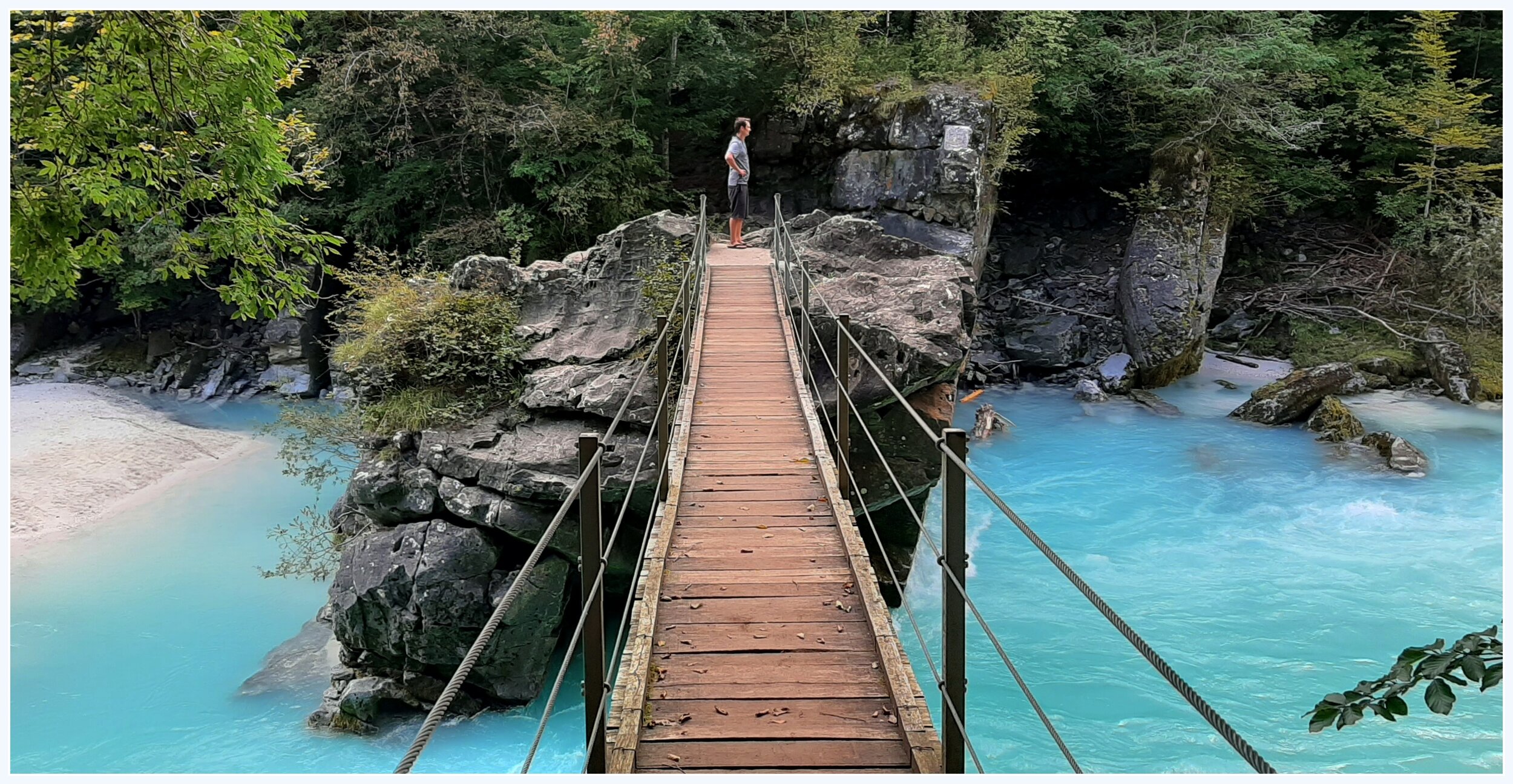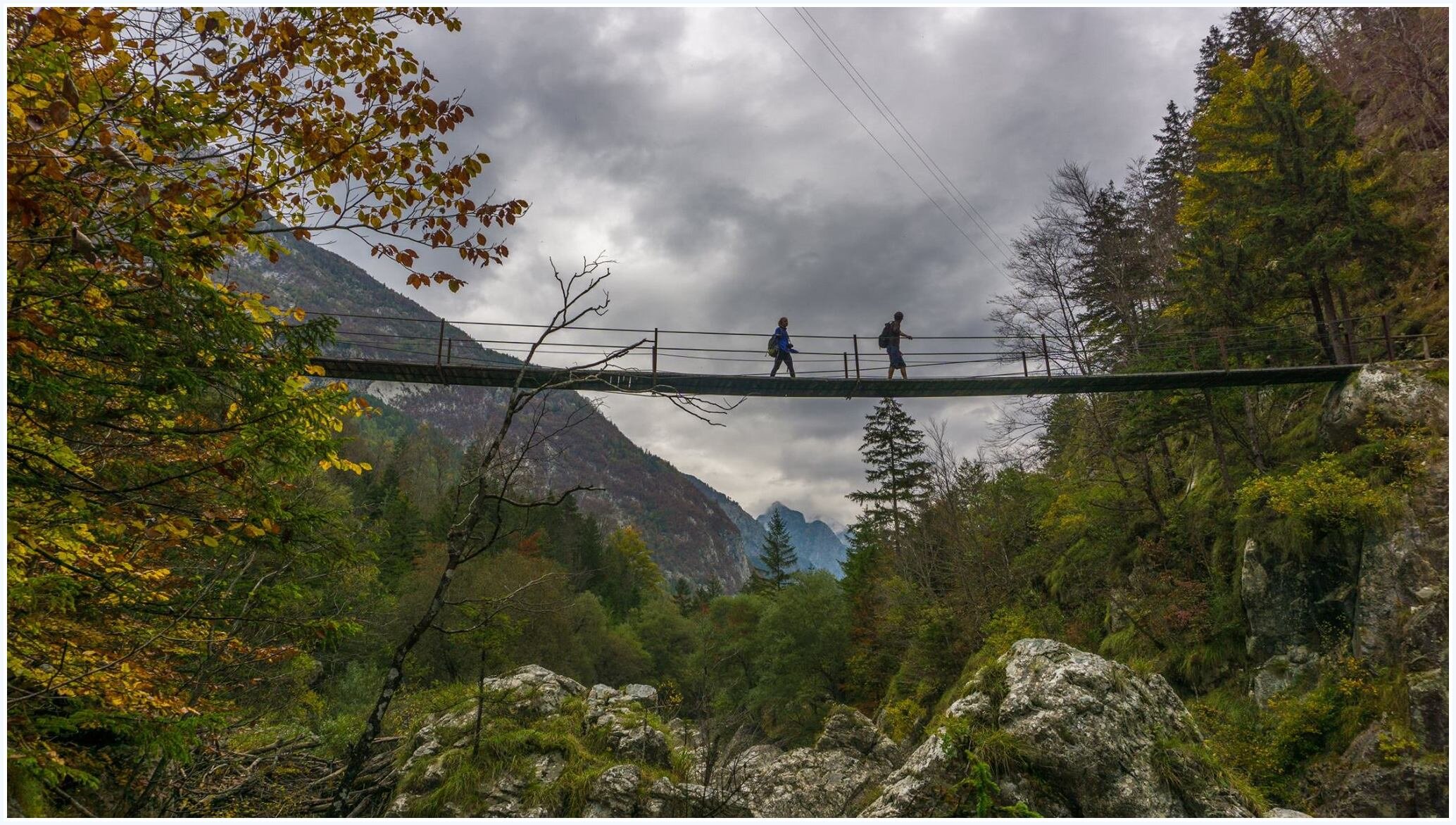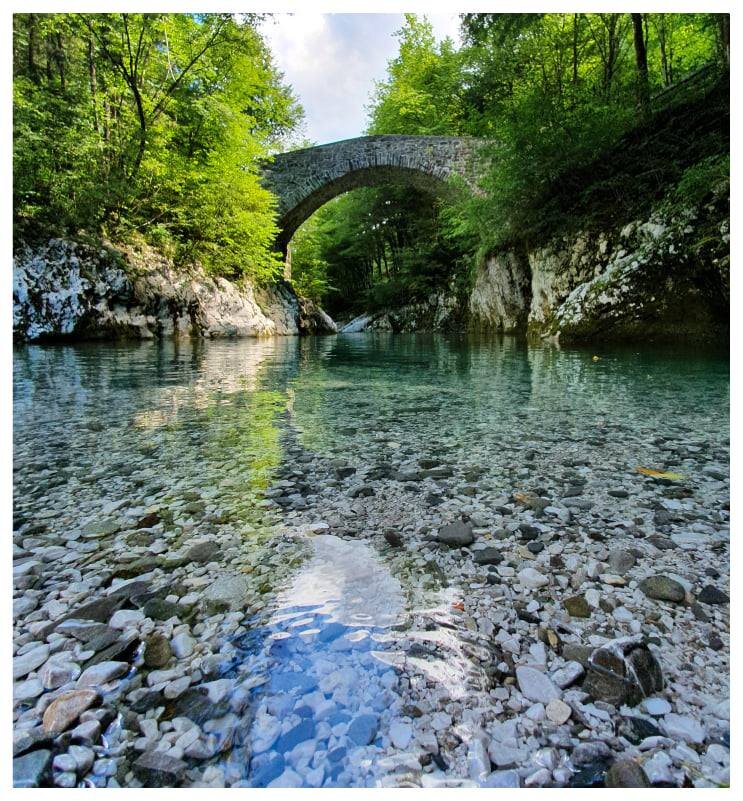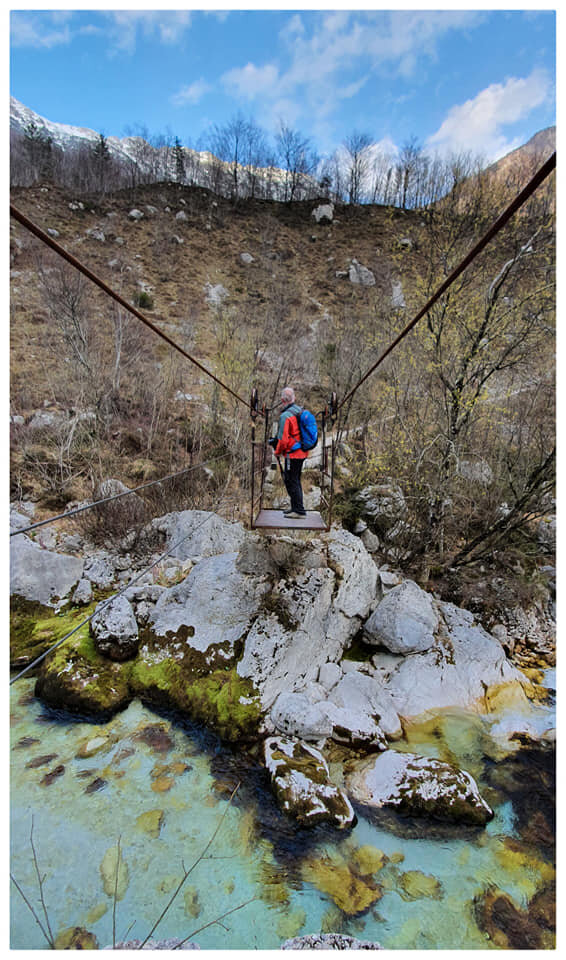Bridging over the Soča valley
Kliknite tukaj za slovenski prevod vsebine bloga
Many people visit the Soča Valley because of its pristine nature, gastronomy, and all the outdoor activities it has to offer. But this time, we will talk about bridges that were built across the valley, and at the end, you might soon discover that bridges are a story in themselves. They allow you to see the valley from various perspectives.
Bridges. These fantastic folk creations provide passage over the usually difficult-to-cross areas like rivers, narrow valleys, gorges. That is why the highly varied Soča Valley has so many of them. The land of the living water. The dynamic landscape with its rocky peaks, canyons, rivers, and ridges has scattered places and people. Witty locals proudly defend the story from their bank of the river, so bridging the gaps was a necessary move. Over the years and centuries, bridges have been built across the Soča, Nadiža, Koritnica and Tolminka rivers. They crossed canyons and lakes, connecting different worlds and paving the way for an unpredictable future. Wooden, iron, stone, each with its own story of the past, culture, disconnection and connection. We’ve picked our top four bridges with exceptional characters and stories.
Rope, pair of boards and nature
Strength, stability, and endurance are the first words to mind when thinking about the bridge. Words that express a sense of structural permanence, of eternity. Then you take a step, and “wow”, your entire world shakes. Welcome to the good old suspension bridge. A piece of rope and a pair of wooden planks put together. Relaxed elegance. A suspension bridge is a simple bridge in which the bridge’s deck rests on two parallel supporting cables attached at both ends of the banks. Hidden among the rocks, the rugged mountains, all slender these bridges hang over the rushing Soča. These modest creations have a long tradition in the mountain parts of Slovenia. There are as many as 16 suspension bridges on the 20 km distance from the source of Soča to Bovec.
Around the world, great architects often make spectacles out of bridges, making it the city’s outstanding asset. On the other hand, simple suspension bridges try to blend in with the environment as much as possible. Unlike stone or steel bridges, which resist natural forces, these suspension bridges hang effortlessly. They move and coexist with nature. When we cross them, they shake the ground under our feet, arouse our attention, and drive life through our veins. Suspension bridges are still considered the most efficient and sustainable solution, especially for river crossings within the Triglav National Park. Below, above, left, and right is nature.
All of Napoleon's bridges
Is it a coincidence, a lack of imagination, or a tortuous strategy of marching French troops? How is it that in the Primorska region, especially on the Soča river, most bridges are named after a French military leader?
The French visited Slovenian territory three times. From 1809 to 1813, today's Slovenia was a part of the Illyrian provinces. The enlightened conqueror Napoleon Buonaparte himself is supposed to have wandered around these regions for only a few days. In 1797 he crossed the Soča Valley with his troops and set out for Carinthia, where he signed an armistice with Austria. He returned through Maribor to Ljubljana, ate lunch, took a break and continued his journey towards Trieste. Despite a brief bureaucratic stop, juicy rumours, constitutional changes, and bridges remained behind.
There are two bridges of the same name in the Upper Soča valley. A stone Napoleon's bridge hides above the Nadiža riverbed near the village of Podbela in the extreme west of Slovenia. It was built in 1812 during Napoleon's conquests on the territory of Slovenia.
An ancient path runs across the bridge, connecting Venice with the rest of the Nadiža river valley. Under the bridge, there is a beautiful pool, which is a warmer alternative to the Soča river, especially in summer.
The second bridge is located east of Kobarid. It flaunts just above the strategic town, where the Soča squeezes into a steep gorge for the last time. The old stone bridge was built in 1750 when Napoleon's troops crossed the valley and continued their journey towards Predel. Austrian soldiers blew it up during the First World War.
After the end of the war, it was gradually rebuilt by the Italians. The bridge also played a crucial role in World War II, when the local partisans defended the Kobarid Republic. The view from the bridge is beautiful, but the turbulent memories of the past bring an edge to the idyllic image. The Soča is fast and freezing, so only the most determined people jump from the bridge.
Tolmin style zipline over the river
Further down the valley, another extraordinary way of crossing the river awaits us. If you set off from the Polog mountain meadow towards Prod and up to the source of Tolminka river, you have to cross the clear and freezing Tolminka river.
Here, where once stood a bridge swept away by torrents, now stands a kind of self-propelled cable car. Locals call it “kurukula”. Kur, ku, ra, what? In practice, it looks something like this: you step on a steel base and use the handles to roll yourself to the other side. There are only two such fun insights in Slovenia, so try it out, and walk up to the magical birthplace of Tolminka.
Solkan bridge with the largest stone arch
The Solkan bridge or Solkan viaduct is the Slovenian Golden Gate, so we simply cannot skip it. It is 219 meters long, 36 meters high and bears the honorary title of the bridge with the world’s largest stone arch. Although it was built out of a simple necessity and was given the title only by chance, it represents a significant construction and engineering achievement of the 20th century.
It was built in 1905 as part of the railway connection between Trieste and Vienna and survived two world wars. During the First World War, the Austrian army blew it up during the 6th Isonzo Offensive, so the Italian army could not cross it. Little did they know that they were fighting for the losing side.
After the war, during the Italian occupation of the territory, the bridge was rebuilt, and then World War II began. This time, the bridge withstood air force attacks and retained its place at the top of the World’s famous railway bridges.
You can admire it from above if you climb up the nearby Sveta Gora. You can walk under or ride across it by train. Not far away, you can face it with horror in your eyes just before the jump from the neighbouring road bridge of Brda. Namely, this is a springboard for the only bungee jump in Slovenia. Here people tied to an elastic band voluntarily throw themselves from 55 m high and fly down towards the surface of the Soča.
Whether you’re a thrill-seeker, a nature lover, or you are determined to follow the culture trails; we’ve got a bridge for you.
Are you considering visiting the Soča Valley? Meeting Mountains are local experts and create tailor made visits for those wanting to make the absolute most out of their time. We find your unique and personalised accommodation, avoid tourist traps and bring you to places you’d never find yourself. We combine nature, activities, culinary experiences and genuine local culture to craft unforgettable moments for you. Do you have any questions? Write Johannes, our Founder, or book a free 30 minute appointment for a consultation.
To stay in touch with Meeting Mountains and receive updates of future blog posts and other news, subscribe to our newsletter here! Thank you











